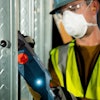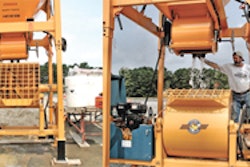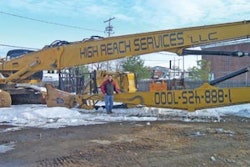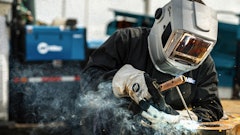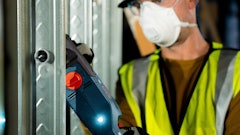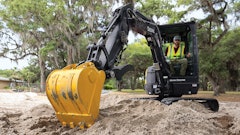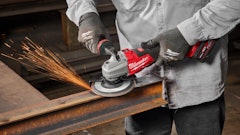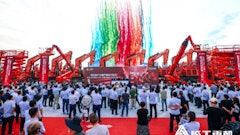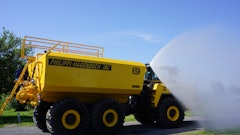ASTM International (originally known as the American Society for Testing and Materials) was started in 1898 due to the poor quality of steel manufacturing for the railroads.
While progress was slow, suppliers and industry soon realized that standard material specifications were necessary in order to produce a longer lasting rail.
With this start other industries soon took note and in 1902 cement, nonferrous metals and alloys, paint and coatings were added. From there ASTM grew to what it is today.
ASTM encompasses approximately 12,000 standards ranging from crayons, cement, snow skiing, advanced ceramics, biotechnology, search and rescue, and terminology.
The growth of ASTM has been tremendous. It is truly arguable that ASTM has had the largest impact on our day to day quality of life and an impact on national, regional and international commerce.
Check the ASTM website - www.astm.org - for more infomation on its history.
What exactly is an ASTM standard?
We all use ASTM specifications or test methods in our daily lives, but few industry practitioners truly understand what they represent or how they come about.
Many in the asphalt industry think ASTM is an approval specification or an endorsement of a product, method or technology.
Just because a piece of equipment or a test method has an ASTM Standard does not indicate or imply approval by a committee or ASTM - it's not an endorsement. It's simply a consensus of procedure developed by a committee that is made up of manufactures, academia, practitioners and interested parties.
According to ASTM's own information, "ASTM does not certify products or grant a seal of approval. ASTM does not verify that products are tested according to a standard. Many manufacturers, however, choose to indicate that a product has been tested according to an ASTM standard by providing such information on product labels or packaging."
So what exactly is a standard?
"As used in ASTM, a standard is a document that has been developed and established within the consensus principles of the organization and which meets the requirements of ASTM procedures and regulations," says ASTM. "Full consensus standards are developed with the participation of all parties who have a stake in the standards' development and/or use."
Where do the standards come from? ?
Have you ever read an ASTM Standard and thought to yourself, how in the world did they ever come up with that? One must understand this is a volunteer organization, so the mix you may have on any one committee or task group may not be a true representative cross section of the industry.
Too often the committee rooms are made up of manufactures and academia, and this is one of the major issues we have in our area of ASTM, especially when new technology is presented. ASTM or the committees assigned to various technical aspects are not the traffic cop for our industry, that's industry's job.
Unfortunately the asphalt industry is very slow to adapt to new technology. This culture has been fostered for many years by government agencies, and some academics labeled as experts in our industry.
Unfortunately this risk adverse mentality then trickles down to the contractors, suppliers and professional service firms and supports an environment where innovation is stifled.
How can we improve the standards? ?
So how does this affect what we can do as an industry? If we stifle innovation and creativity, it does not encourage progressive technology to be born and applied in our industry. Basically we get the leftovers from more progressive industries and remain years behind the technology curve.
Private companies are rarely invited into the research circles, and will frequently be prevented from participating. When they do develop ground breaking technology, manufactures are put through such a gauntlet to prove it works that many simply move on to other industries or go out of business.
In reality it's sad that we are our own worst enemy when it comes to innovation. Why does a researcher concentrate on the 5% that may be questionable about a new product but neglect the 95% that can truly change for the better the way we do things?
As an industry we need to embrace new products and technologies that can help us perform our job better, faster and cheaper. Why does each state have to run their own test program even though 10 states have already preformed similar testing?
If we want to progress we need to change our ways from the top down. The industry needs to allow manufactures into the research and development process, and embrace the fact that a typical manufacturer will not release a product into the industry that does not work.
One place to start is to shorten the time it takes ASTM to develop quality specifications that will allow a user to understand a recommended procedure and let the industry decide if the technology or product is viable.
States need to collaborate on test programs or better yet allow or incentivize contractors to try new technologies on their projects.
Who holds the key?
Why is ASTM the key to rapidly introducing new technology into our industry?
Most states or contractors will not allow any device without an ASTM standard to be used. So this presents manufactures a true catch-22.
Most ASTM task groups or committees want to see field data to validate a device. However, to further complicate and slow down the process, data presented by the manufacturer is immediately considered suspect, when in fact, typically it's the most comprehensive, and accurate data that could be presented.
Providing independent field data is a slow, time consuming and costly process. In some applications, without an ASTM Standard obtaining this type of data can be near impossible.
Manufactures are the true experts of the technology they invent, but our industry chooses to discount this and assigns "experts" who in many cases have a limited understanding of the technology and its application. This has to stop if we want to move new technologies forward within our industry.
Recently the president of ASTM, James A. Thomas, wrote a column where he discussed the role of ASTM when it comes to standardization and innovation and how the two must go hand in hand.
The fact is the innovation cycle and development time has shortened in recent years. In order to foster this relationship we need to develop standards during the early stages of development not at the back end of deployment.
Standardization is necessary and often forms the basis for successful innovation. Our industry needs to listen and embrace this mindset.
If we were to function with this approach it would not take four-plus years to develop one specification on a new technology that by the time the standard is approved the technology is out of date.
Too many times task groups within ASTM take on the academic mindset of vetting new technology ... this is not their job and is very costly for our industry.
What's next?
It's time for our ASTM representatives to reevaluate what their roles are. It's imperative they look outside their own committees and see what other committees are doing in ASTM. Review how these committees are forwarding new standards on ground breaking technology all around us.
These representatives need to truly understand and embrace the relationship of standardization and innovation. We need to establish trust and cooperation between manufactures and researchers.
Task groups and committees must understand that manufacturers' goals are indeed different than academic intuitions. No manufacturer or inventor should be required to publish peer-reviewed papers or put proprietary information in print to get a standard approved.
Manufactures need to be viewed as the experts of their innovations and allowed to present their data accordingly. Lastly it's time for practitioners to get involve and make their voice heard. We can change this culture if we get involved.



